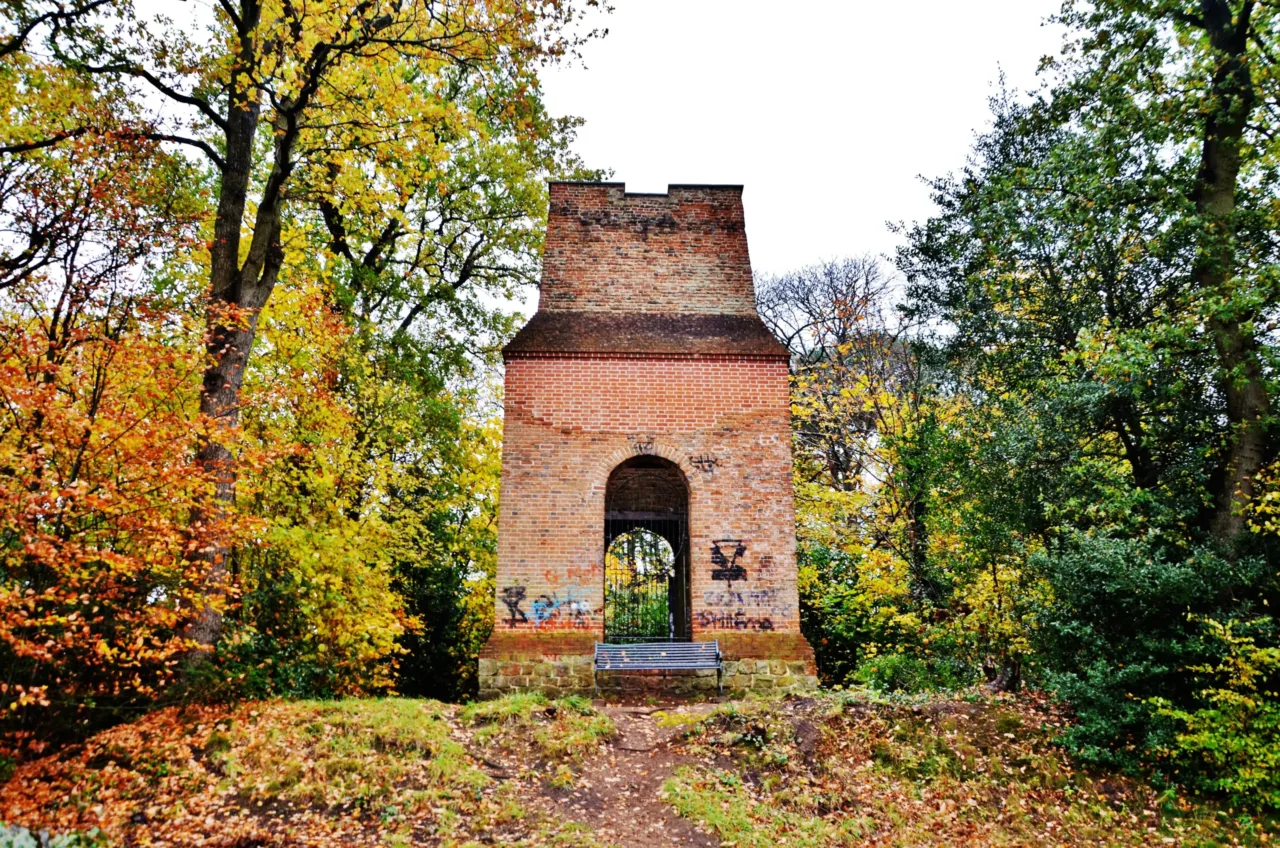The brick tower known as “The Obelisk” has fascinated local people for many years. Only about 9.4 metres (30 feet) now remain, but it is estimated that it originally stood about 30.5 metres (100 feet) high. A wooden staircase inside allowed access to the top, and the building was probably divided into several storeys. The brickwork is about 1.5 metres (almost 5 feet) thick in parts.
It was built in around 1765-70 by John Norris of Hawley Place, which lies about 2 miles away to the west. The surrounding area was then open heathland, and on a clear day it was possible to see for many miles. Camberley itself did not then exist, and the Obelisk was a notable landmark, as early maps show.
Nobody really knows why it was built but many suggestions about the Obelisk’s purpose have been made over the years. One theory is that it was some sort of signalling tower. Signalling towers were used in the late 18th and early 19th centuries as a way of passing urgent official news. A surviving example is Chatley Heath Semaphore Tower, built around 1820. However, the semaphore system only dates from about 1800, by which time The Obelisk was already over 30 years old.
Nearly 20 miles away, on the top of West Wycombe Church tower, there is a strange structure: a golden sphere, with seating inside for several men. This was built in 1751 by Sir Francis Dashwood, who was a friend of Norris. Over the years, a local legend grew up that The Obelisk and West Wycombe’s tower were part of a private signalling system between the two men perhaps used to relay bets. Although this idea has been repeated in several histories, no firm evidence has come to light.
Various reasons have been put forward to explain why Dashwood and Norris needed to signal information between themselves. It has been speculated that the two men signalled bets to each other, or that the signalling was related to the activities of the disreputable Hellfire Club, of which both men were members. It has even been suggested that they were involved in an espionage network, and that during the period of the American War of Independence Norris passed secret information to Dashwood, who was Postmaster General from 1765 to 1781. This theory is supported by a letter written by Norris, dated 3 June 1778, in which he notes: “Did this day heliograph intelligence from Dr Franklin in Paris to Wycombe“. (Ref.)
Many other suggestions have been put forward. Some believe that it could have been a watchtower to warn against highwaymen, other, that it was a viewing platform from which spectators could follow the local hunt, or a beacon tower to guide weary travellers and huntsmen home across the heath. It would certainly have given a good view of the Great Military Camp held on Bagshot Heath in 1792, when 5,000 troops spent the summer under canvas. 150,000 horsemen were present on the day that King George III reviewed the troops, so the spectacle must have been visible for many miles. Finally, the Obelisk could have just been a rich man’s folly, as the name “Norris’s Whim” suggests.
Photo credit: Stephen Poole via Flickr. Most information dates from Stephen’s text in 2017 and from Wikipedia in 2025.
Saint Tarcisius School, Camberley
If you’re on a wander down memory lane, you might like this post from 2020 about my former junior school in Camberley.



Leave a Reply